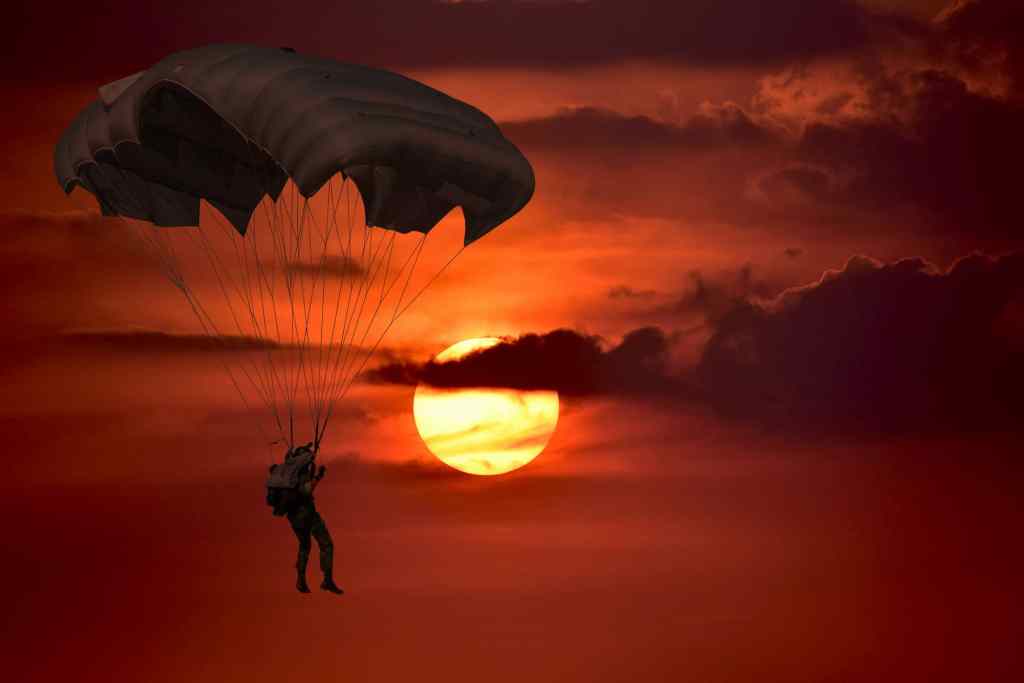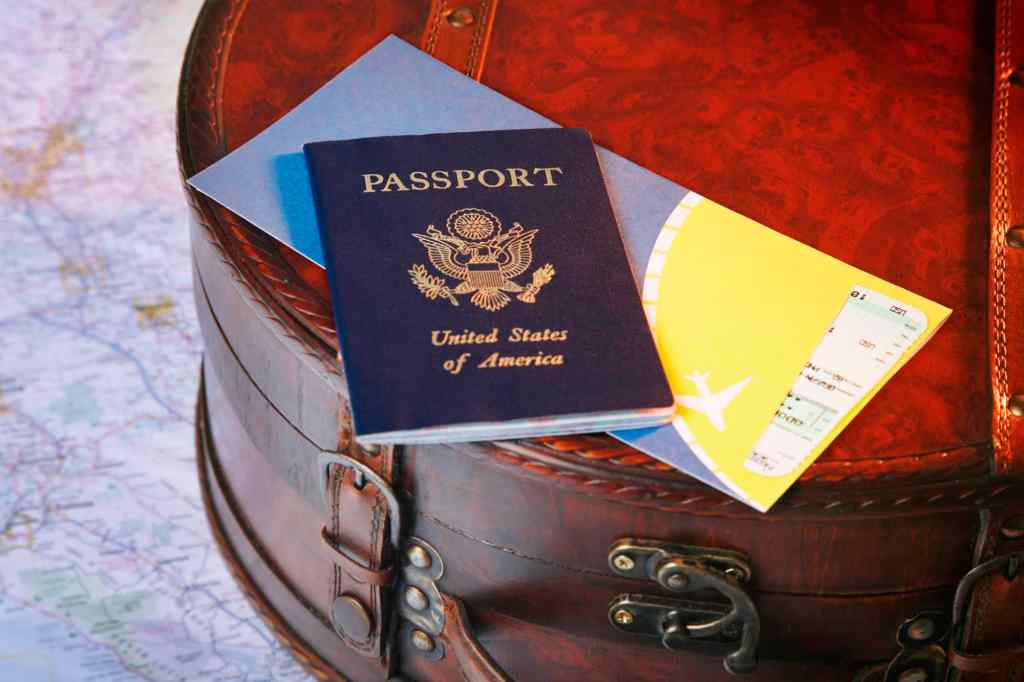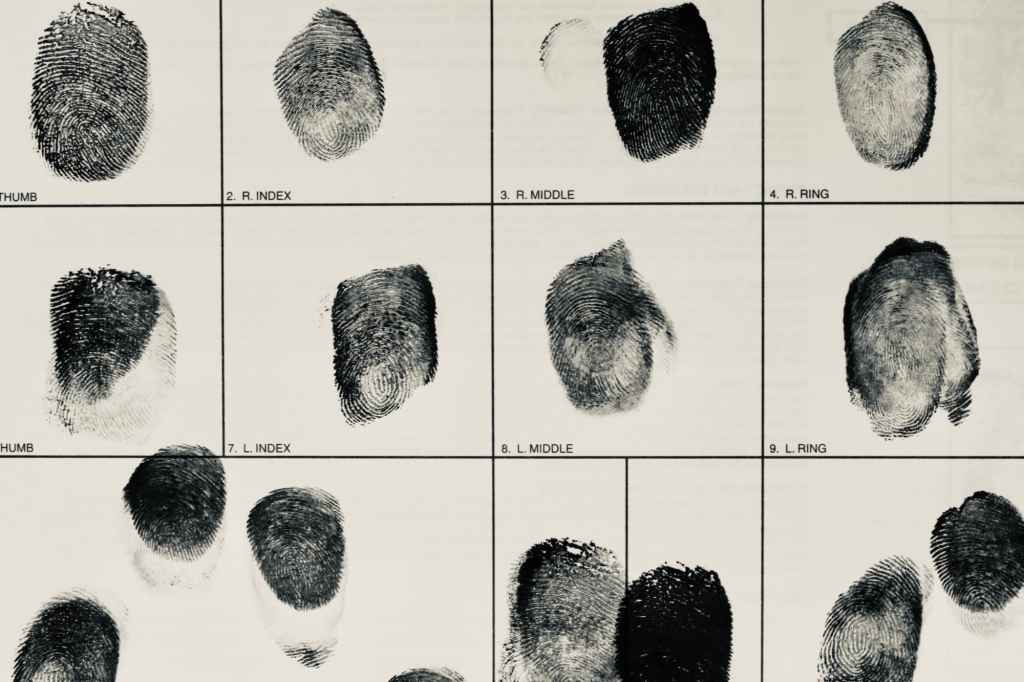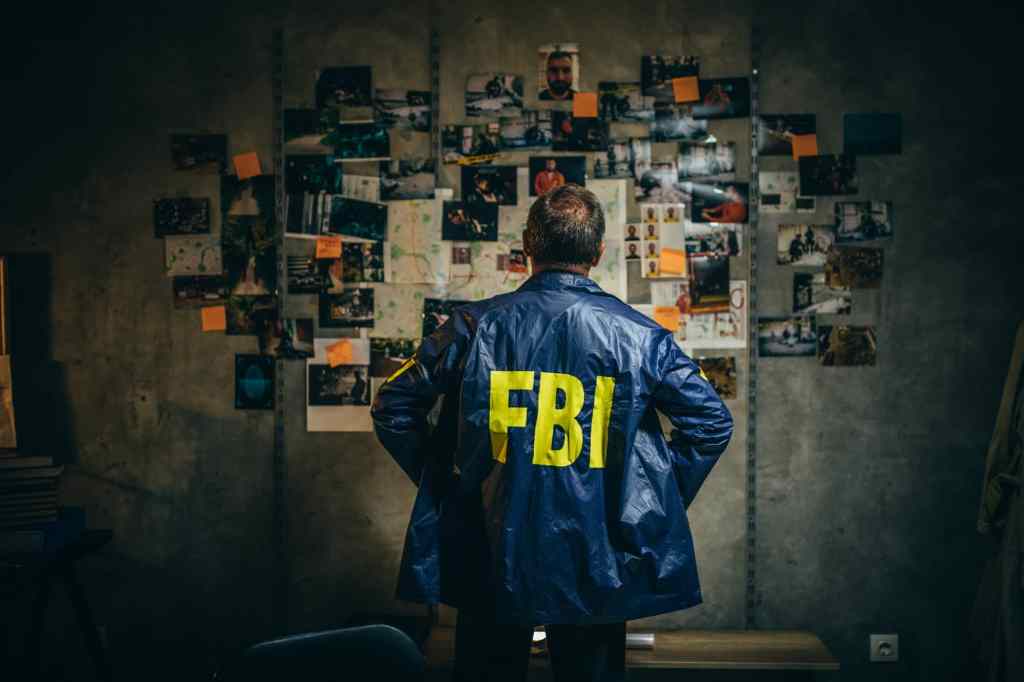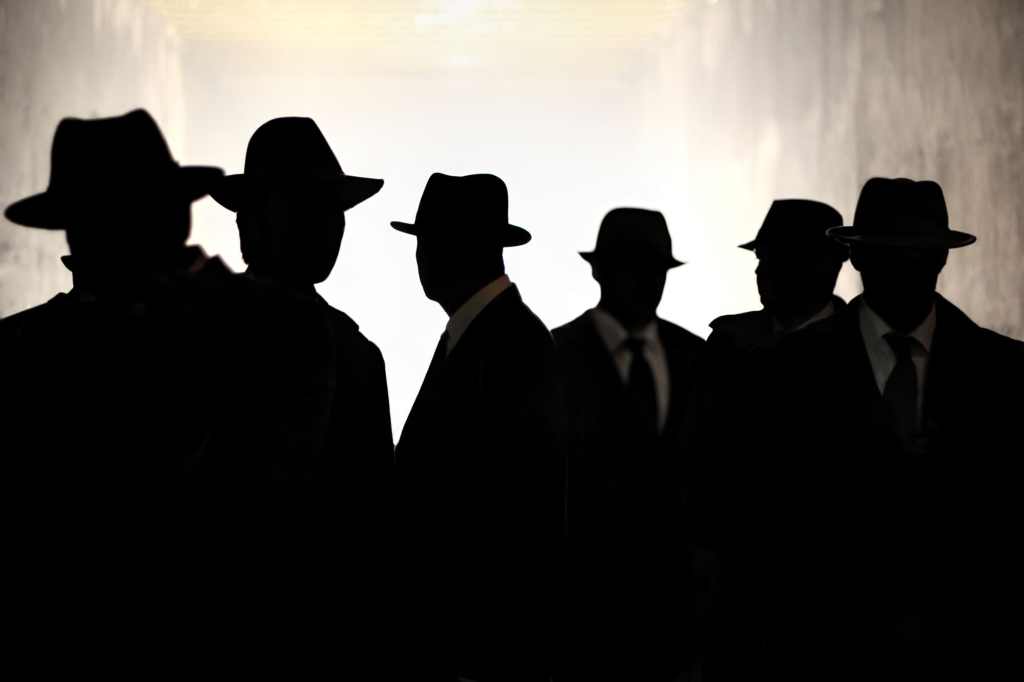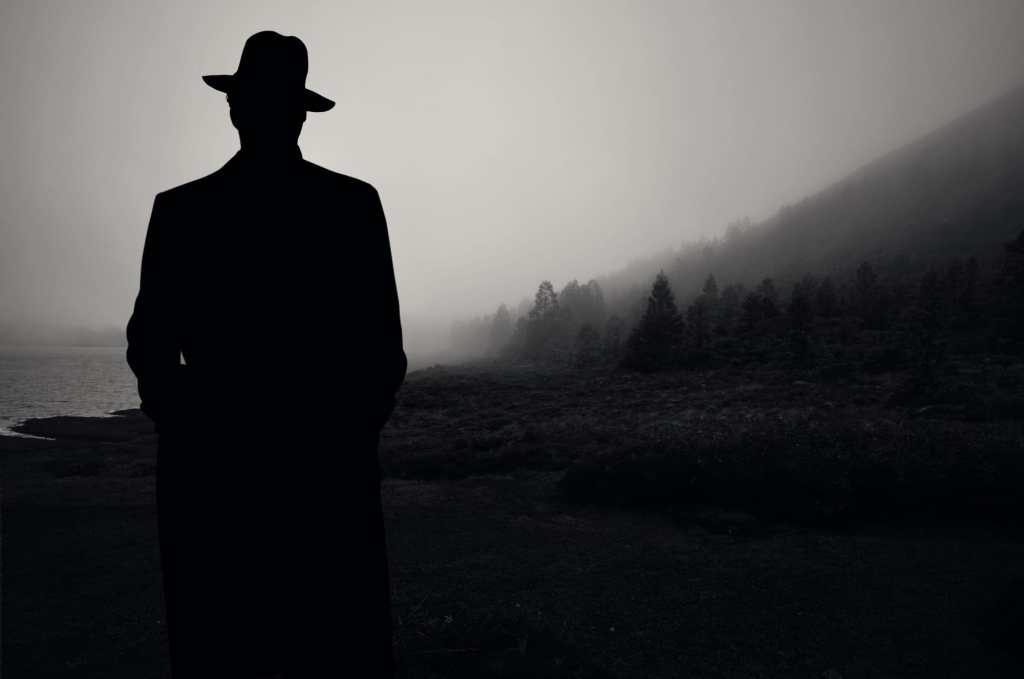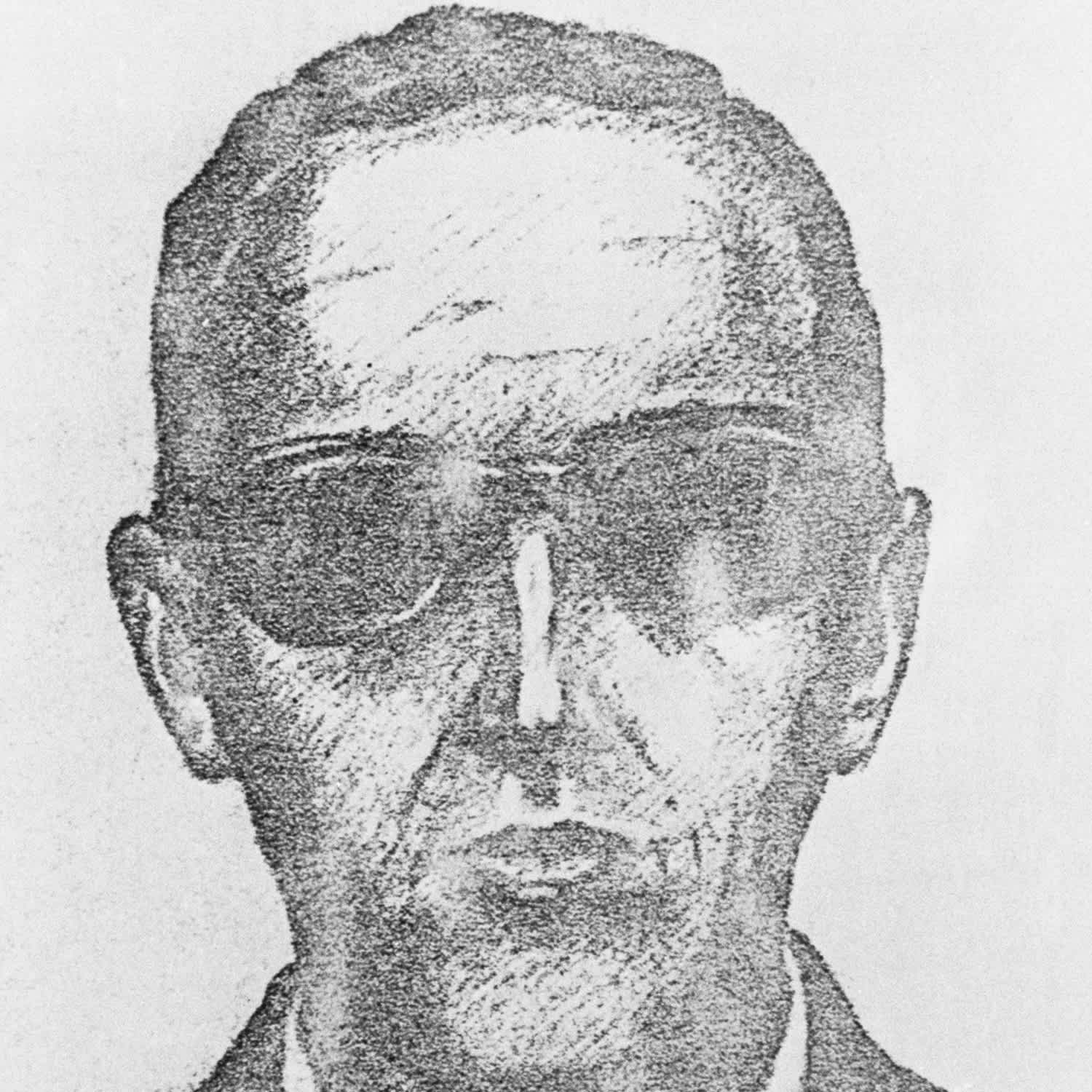
- POPSUGAR Australia
- Celebrity
- Who Was DB Cooper, the Man Who Stole $1.4 Million and Vanished Without a Trace?
Who Was DB Cooper, the Man Who Stole $1.4 Million and Vanished Without a Trace?

Netflix’s “DB Cooper: Where Are You?” is a deep dive into one of the most legendary unsolved cases in history. The four-part docuseries, which premieres later this summer, will examine the decades-old case of DB Cooper, an unidentified man who hijacked an aeroplane flying between Portland and Seattle in 1971. After escaping with $200,000, valued at nearly $1.4 million today, Cooper leapt from the plane and vanished without a trace. Over the past 50 years, investigators and crime specialists have worked to piece together Cooper’s identity – to no avail.
Theories suggest that Cooper could have been a Boeing employee, a skilled paratrooper, or even a notable serial killer. In 2016, the FBI officially suspended the active Cooper investigation and released evidence from the plane, including a clip-on tie, a mother-of-pearl tie clip, and eight cigarette butts, sparking even more theories about the skyjacker’s identity.
The Netflix series, coproduced with Fulwell 73 Productions and PMZ Pictures, will include interviews with top investigators on the case and detail their quest to iron out the only unsolved case of air piracy in commercial aviation history.
Who Is DB Cooper?
Image Source: Getty / Bettmann
On the afternoon of Nov. 24, 1971, a man in a dark suit purchased an airline ticket under the alias Dan Cooper. Due to a media miscommunication, his media epithet later became DB Cooper, a slight variation on his actual pseudonym. The plane, a Boeing 727 aircraft, took off for Seattle from Portland at approximately 2:50 p.m. PT. Shortly after takeoff, Cooper handed flight attendant Florence Schaffner a folded note. Assuming the note was the unidentified man’s phone number, Schaffner dropped the paper into her purse, only for Cooper to lean forward and whisper, “Miss, you’d better look at that note. I have a bomb.”
Per the note’s instructions, Schaffner moved to sit next to Cooper and asked to see the bomb. Opening his briefcase, Cooper showed the flight attendant eight red cylinders attached to wires and a cylindrical battery before listing his demands: $200,000, four manually-operated civilian parachutes, and an aircraft fuel truck standing by in Seattle for use upon their arrival. Schaffner relayed Cooper’s demands to Flight 305’s pilot, William A. Scott, who told the other 35 passengers onboard that their flight to Seattle would be delayed due to “minor mechanical difficulty.”
As police assembled a group of emergency responders and gathered Cooper’s demands – including 10,000 unmarked $20 bills – the plane circled over Puget Sound, WA, for two hours. During this time, Cooper commented on the layout of the land below them, and witnesses claimed that he was calm, well-spoken, and polite, even going so far as to offer to request meals for the flight crew ahead of their arrival in Seattle.
When the plane finally landed at Seattle Tacoma Airport in heavy rain, Northwest Orient’s Seattle operations manager, Al Lee, delivered Cooper’s ransom and parachutes. Satisfied, Cooper let all the passengers and flight attendants off the plane. Once the plane was refuelled, they ascended back into the air, headed for Reno–Tahoe International Airport. Around 8 p.m., the remaining crew noticed a sudden change in air pressure, indicating that the aft door of the plane was open. A few minutes later, as the plane was flying over a heavily-wooded area, there was a sudden movement against the aircraft’s tail section, likely indicating that this was the moment Cooper jumped from the plane with his ransom. Available evidence suggests that Cooper landed somewhere near the Washougal River and did not survive the jump, but no body was ever found.
Investigators quickly gathered composite sketches, eyewitness reports, and physical evidence following the hijacking. Police also conducted aerial and ground searches, following countless leads with no luck. On Feb. 10, 1980, an 8-year-old boy named Brian Ingram discovered three packets of the ransom cash, totalling around $5,800, as he dug in the sandy riverbank on the Columbia River at a beachfront known as Tina Bar. Police analysis later confirmed that 10 bills were missing from one of the packets of heavily-deteriorated ransom cash and that the money had been buried in the riverbank several months after the hijacking. No additional bills from Cooper’s ransom have been discovered.
While the FBI officially suspended active investigation of the case in 2016, anyone who may encounter new physical evidence linked to the Cooper case is encouraged to submit it for further analysis. Ahead, learn more about the case’s top suspects.
“DB Cooper: Where Are You?” Release Date
The four-part docuseries will hit Netflix on July 13 and will take a look at the 50-year investigation into Cooper’s true identity. Ahead, see evidence pointing to 14 suspects, including several skydiving experts and Marvel’s Loki.
Related: “Keep Sweet”: What Happened to Cult Leader Warren Jeffs?
Bryant "Jack" Coffelt
Jack Coffelt was a conman, an ex-convict, and a chauffeur for Abraham Lincoln’s great-grandson, Robert Todd Lincoln Beckwith. In 1972, Coffelt began claiming he was Cooper, intending to sell his story to a Hollywood production company. Coffelt, who bore a slight resemblance to composite drawings of Cooper, was reportedly in Portland on the day of the skyjacking and suffered injuries consistent with a jump from a plane.
While his story was temporarily convincing, FBI investigators later found that several details Coffelt provided about the incident were inconsistent with confidential information about Cooper’s disappearance. Coffelt was quickly eliminated as a suspect and died in 1975.
Kenneth Peter Christiansen
Kenneth Christiansen was a trained Army paratrooper who became a mechanic and then a flight attendant before his death in 1994. In 2003, Kenneth’s brother, Lyle Christiansen, watched a documentary about the DB Cooper hijacking and became convinced that his late brother was behind the robbery. While Lyle made numerous attempts to convince FBI agents and filmmaker Nora Ephron that Kenneth – who was shorter, thinner, and lighter in complexion than eyewitness descriptions of Cooper – was behind the skyjacking, investigators shrugged off the theory.
Lyle then hired private detective Skipp Porteous to look into the case. Porteous went on to write a book hypothesizing that Kenneth could have been Cooper, but the FBI continues to reject the late flight attendant as a prime suspect, citing a lack of incriminating evidence and skydiving expertise.
Lynn Doyle Cooper
Lynn Doyle “LD” Cooper was a leather worker and a Korean War veteran who died in 1999. In 2011, his niece, Marla Cooper, said she recalled her uncle planning the notorious skyjacking during a family gathering around Thanksgiving Day in 1971. According to Marla, she remembered seeing LD and another uncle using “very expensive walkie-talkies” before the two men left to go turkey hunting.
When they returned, LD was “bloody, bruised, and a mess,” claiming he’d been in a car accident. She recalled one of her uncles saying, “We did it. Our money problems are over; we’ve hijacked an aeroplane,” before asking her father to “help them go back into the woods and find the money.”
Marla adds that LD had a comic about Dan Cooper, a Canadian skydiving cartoon character, tacked to a wall in his home – a nod to the alias used by the elusive hijacker. Marla’s claims prompted investigators to reopen the DB Cooper case, but there wasn’t enough evidence to implicate LD as an active suspect.
Barbara Dayton
Barbara Dayton was a librarian, a highly-skilled recreational pilot, and a parachutist who served in the US Merchant Marine and later in the Army during World War II. Assigned male at birth, Dayton underwent gender reassignment surgery in 1969 and claimed to have staged the hijacking two years later.
According to Kay Melchisedech Olson’s 2010 book, “DB Cooper Hijacking: Vanishing Act,” Dayton claimed that she staged the hijacking to “get back” at the airline industry for rules and conditions that prevented her from obtaining a commercial pilot’s license. She said she later hid the ransom money in a cistern a few miles south of Portland. When she realized that the hijacking charges could still be brought, she recanted her statement. The FBI has never seriously acknowledged Dayton, who died of pulmonary disease in 2002, as an official suspect in the DB Cooper case.
William Gossett
William Gossett was a veteran of the Korean and Vietnam wars, as well as a skilled parachutist and survivalist. After the DB Cooper case became public, Gossett was obsessed and told his sons and a San Diego judge that he was the mystery man behind the hijacking. According to William’s son, Greg Gosset, William was constantly strapped for cash but had wads of money to spend just before Christmas 1971 – weeks after the skyjacking. Despite William’s claims, investigators could not find any evidence incriminating the veteran. He died of natural causes in 2003 at the age of 73.
John List
John List was a convicted murderer who killed his wife, three children, and 84-year-old mother at their home in Westfield, NJ, on Nov. 9, 1971. List withdrew $200,000 from his mother’s bank account and disappeared soon after, evading police for nearly 18 years.
Investigators on the DB Cooper case primarily considered him a suspect for the timing of his disappearance and his resemblance to the hijacker’s description. After his arrest in 1989, List admitted to murdering his family but denied any involvement in the DB Cooper case. Police were unable to find any substantial evidence implicating List in the hijacking, and the FBI no longer considers him a suspect. List died in 2008.
Ted Mayfield
Theodore Ernest Mayfield was a Special Forces veteran, a pilot, a competitive skydiver, and a skydiving instructor who was considered a suspect early on in the DB Cooper investigation. According to FBI Agent Ralph Himmelsbach, Mayfield called him less than two hours after Flight 305 landed to offer possible leads on Cooper’s potential landing zone and information about local skydivers. Mayfield’s daughter added that he called her from his home phone number on the night of the hijacking and seemed calm.
Prior to the skyjacking, Mayfield had served time for negligent homicide after two of his skydiving students died when their parachutes failed to open, and he was later found indirectly responsible for 13 additional deaths related to faulty equipment. Mayfield denied any involvement in the hijacking and died in 2015.
Richard McCoy Jr.
Richard McCoy Jr. was a Vietnam War veteran who worked as an Army demolition expert and later as a helicopter pilot for the Green Berets. After his time in the Army, McCoy became a warrant officer for the Utah National Guard and a frequent recreational skydiver.
On April 7, 1972, he boarded a Boeing 727-22C aircraft under the alias James Johnson. Using an unloaded handgun and a paperweight that resembled a hand grenade, McCoy hijacked the plane, taking four parachutes and $500,000 – the equivalent of nearly $3.5 million in 2022. With the help of fingerprints found on a magazine he’d been reading, and a handwriting analysis of a note he’d left behind, police arrested McCoy two days later. In 1974, McCoy, who received a 45-year sentence, escaped prison and was killed in a shootout with FBI agents three months later.
In 1991, parole officer Bernie Rhodes and former FBI agent Russell Calame released “DB Cooper: The Real McCoy,” which posited that the modus operandi for McCoy’s hijacking could make him a suspect in the DB Cooper case. Despite suspicions about McCoy’s involvement in the hijacking, the FBI does not consider him a viable suspect primarily due to mismatches in age and description, as well as a solid alibi placing him in Las Vegas on the day of the Portland hijacking and at home in Utah having Thanksgiving dinner with his family the following day.
Sheridan Peterson
Sheridan Peterson served in the Marine Corps during WWII and later became a technical editor at Boeing. Peterson bore a striking resemblance to the Cooper description and had experience as a smokejumper – a trained wildland firefighter placed at the site of the fire via parachute – making him a prime suspect during the Cooper investigation.
In a 2007 issue of Smokejumper magazine, Peterson taunted police about his potential involvement in the skyjacking, writing, “Actually, the FBI had good reason to suspect me. Friends and associates agreed that I was without a doubt, DB Cooper. There were too many circumstances involved for it to be a coincidence. At the time of the heist, I was 44 years old. That was the approximate age Cooper was assumed to have been, and I closely resembled sketches of the hijacker. But what was even more incriminating was the photo of me simulating a skydiving manoeuvre for Boeing’s news sheet. I was wearing a suit and tie – the same sort of garb Cooper had worn, right down to the Oxford loafers. It was noted that skydivers don’t ordinarily dress so formally.”
When officially pressed by FBI agents, Peterson denied any involvement in the Cooper hijacking, claiming that he had been in Nepal. He died in 2021.
Robert Rackstraw
Robert Rackstraw was a retired pilot and an ex-convict who had served on the Army helicopter crew in the Vietnam War. In February 1978, he was arrested in Iran and deported to the US over explosives possession and check-kiting charges. He later tried to fake his own death in a rented plane and was arrested for allegedly forging federal pilot certificates. Rackstraw resembled sketches of Cooper but would have only been 28 at the time of the hijacking, while Cooper was believed to be in his mid-40s.
In 2016, Rackstraw reemerged as a suspect when The History Channel released a special called “DB Cooper: Case Closed?” and author Thomas J. Colbert published a book about the investigation. Working with attorney Mark Zaid, Colbert pushed the FBI to release the Cooper case file to the public under the Freedom of Information Act and later uncovered evidence – including a “decades-old parachute strap” and a mysterious letter – that might be linked to the hijacking.
Ultimately, no direct evidence could be found linking Rackstraw to the Cooper case, with a flight attendant from Flight 305 noting that she “did not find any similarities” between photos of Rackstraw and Cooper’s appearance. Rackstraw died in 2019.
Walter R. Reca
Walter R. Reca was a former military paratrooper who claimed to be a spy. During a recorded phone call in 2008, Reca reportedly told his friend Carl Laurin that he was DB Cooper and allowed Laurin to tape their phone calls about the hijacking over a six-week period. In 2018, four years after Reca’s death, Laurin published “DB Cooper & Me: A Criminal, A Spy, My Best Friend,” which thrust Reca into the spotlight of the Cooper case.
Details included in Reca’s account of the events, however, do not fully align with confirmed details about the Cooper investigation. Additionally, Reca did not resemble the composite sketch of Cooper and had significantly more skydiving experience than the hijacker, who the FBI profiled as an amateur skydiver at best. To date, the FBI has found no evidence that would prove Reca’s involvement in the DB Cooper case beyond a reasonable doubt.
William J. Smith
William J. Smith was a WWII veteran from New Jersey who enlisted in the US Navy and volunteered for combat-air-crew training after high school. In November 2018, The Oregonian, a daily Portland newspaper, published an article proposing Smith as a suspect in the DB Cooper case. The article posited that Smith, who was 43 at the time of the hijacking, was affected by the Penn Central Transportation Company’s bankruptcy in 1970 during his time as a railroad worker.
The Oreganian theorized that Smith might have carried out the hijacking due to a sudden need for money and a personal grudge against the corporate establishment after losing his pension. Smith died in 2018, and the FBI have not publicly commented on tips about his potential involvement in the Cooper hijacking.
Duane L. Weber
Duane L. Weber was a WWII Army veteran who served time in at least six prisons between 1945 and 1968 on counts of burglary and forgery. On his deathbed in 1995, three days before his death, Weber told his wife, Jo, “I am Dan Cooper.” While the name meant nothing to Jo, she conducted research at the local library and found her husband’s handwriting in the margins of “DB Cooper: What Really Happened” by Max Gunther. Jo found little evidence connecting her husband to the hijacking, other than the fact that Weber and Cooper were both chain smokers who drank bourbon.
Speaking with CBS News in 2000, FBI Agent Ralph Himmelsbach said, “[Weber] does fit the physical description (and) does have the criminal background that I have always felt was associated with the case.” However, he had doubts that Weber and Cooper were one and the same. The FBI officially eliminated Weber as an active suspect in the investigation in July 1998 after his fingerprints failed to match those found at the scene of the hijacking. Later, Weber’s DNA also failed to match samples recovered from Cooper’s tie.
Marvel's Loki
In addition to the real-life suspects who have become entangled in the DB Cooper case, numerous films and TV shows have hinted at theories that might reveal the mysterious hijacker’s true identity. One of the most popular television theories involves none other than Marvel’s Loki, the God of Mischief, whose superhuman strength, speed, and agility would make it easy for him to get away with almost any crime. While Loki is a fictional character, the Marvel Cinematic Universe made a case for Loki’s role in the DB Cooper investigation in a 2021 episode of the Disney+ show “Loki.”
During the episode, Loki, dressed in a sharp suit and sunglasses, flirts with a flight attendant and hijacks a plane after losing a bet with Thor. According to the MCU, the reason Cooper was never found is that Loki travelled via Bifrost – a dimensional energy bridge – back to Asgard immediately after leaping out of the plane with his ransom.
Speaking with Decider about the nod to the decades-old crime, “Loki” writer Michael Waldron said, “That was me writing the pilot, or writing the first episode, having fun with Mobius showing Loki the scenes from his life,” he said. “People, I think when they heard about this show, they always thought, ‘OK, it’s Loki travelling through time influencing historical events . . . And I got excited about, ‘What is the really fun stuff that we can imagine [for Loki]?’ And I just love DB Cooper. It’s a great piece of American folklore, and now it’s canon: Loki is DB Cooper [in the MCU]. We solved the riddle.”
Considering that we’re no closer to uncovering DB Cooper’s true identity today than we were in 1971, the idea that he might be a fictional character doesn’t seem too far off.



